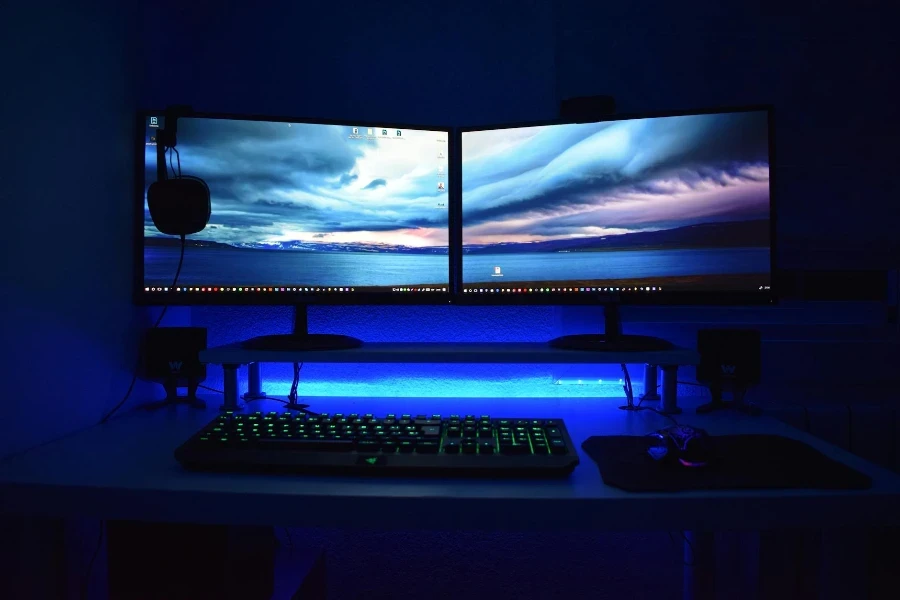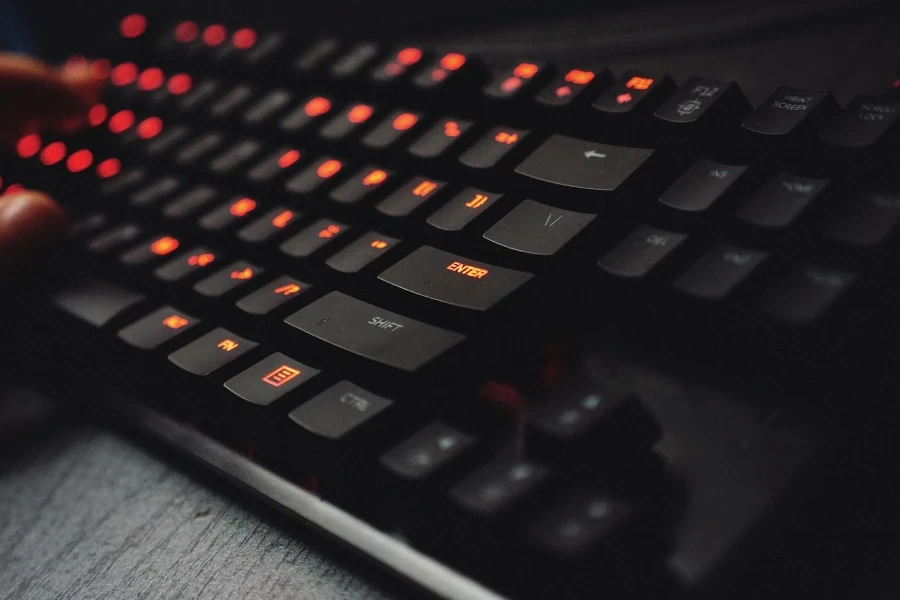The humble keyboard, often overlooked, is an essential tool for both productivity and entertainment. This guide aims to demystify the various aspects of keyboards, making it easier for you to choose the perfect match for your needs. From mechanical nuances to ergonomic designs, we cover the five critical areas that users care most about. Join us on this journey to unlock the potential of keyboards, enhancing your typing experience one keystroke at a time.
Table of Contents:
– The importance of key switch types
– Understanding keyboard layouts and sizes
– The role of connectivity in keyboard functionality
– Ergonomics and comfort: Finding your perfect fit
– Customization and additional features
The importance of key switch types

Key switches are the heart of any keyboard. They determine the feel, sound, and responsiveness of your typing experience. There are primarily three types: mechanical, membrane, and scissor switches. Mechanical switches are favored for their durability and tactile feedback, making them a popular choice among typists and gamers. Membrane switches, on the other hand, offer a softer, quieter typing experience, often at a more affordable price point. Scissor switches, commonly found in laptops, strike a balance between the two, offering a comfortable, low-profile typing experience.
Each switch type has its variants, further tailoring your typing experience. For instance, mechanical switches come in different actuation types, such as linear, tactile, and clicky. Understanding the nuances of these switches can significantly impact your satisfaction with a keyboard. It’s not just about the actuation force but also about the sound profile and the tactile feedback that can enhance or detract from your typing rhythm.
Choosing the right key switch involves considering your typing habits, noise tolerance, and budget. Whether you’re a gamer seeking precision and speed, a writer in need of comfort for long typing sessions, or someone who values silence, there’s a switch type designed for your specific needs. The journey to finding your ideal keyboard begins with understanding these fundamental differences.
Understanding keyboard layouts and sizes

Keyboard layouts and sizes significantly influence usability and comfort. The most common layouts include the full-size, tenkeyless (TKL), and compact or 60% keyboards. Full-size keyboards offer the complete range of keys, including the number pad, making them ideal for users who frequently engage in data entry or complex keyboard shortcuts. Tenkeyless keyboards omit the number pad, resulting in a more compact design that frees up desk space without sacrificing functionality.
Compact or 60% keyboards take minimalism further, removing not only the number pad but also function keys, navigation keys, and sometimes even arrow keys. This size is favored by those who prioritize desk space and portability, such as gamers or mobile professionals. However, it’s essential to consider how the absence of certain keys might impact your workflow or gaming experience.
Beyond size, the physical layout of keys, such as QWERTY, AZERTY, or DVORAK, can also affect typing efficiency and comfort. Experimenting with different layouts might reveal a preference you never knew you had, potentially increasing your typing speed and reducing fatigue.
The role of connectivity in keyboard functionality

Connectivity is a crucial aspect of keyboard functionality, affecting everything from setup to daily use. Wired keyboards, typically connecting via USB, offer reliable, lag-free performance, making them a staple in gaming and professional settings. On the other hand, wireless keyboards, which connect via Bluetooth or a proprietary receiver, offer unparalleled flexibility and a cleaner, cable-free setup.
The choice between wired and wireless connectivity often comes down to personal preference and specific use cases. Wireless keyboards are ideal for those who value mobility or have a minimalist setup, while wired keyboards cater to users who prioritize performance and reliability. It’s also worth noting that advancements in wireless technology have significantly narrowed the performance gap, making wireless keyboards a viable option for even the most demanding users.
Battery life is another consideration for wireless keyboards. Models vary widely in their power efficiency, with some requiring frequent battery replacements or recharging, while others can last for months or even years on a single charge. Paying attention to battery life can save you from unexpected interruptions during critical moments.
Ergonomics and comfort: Finding your perfect fit

Ergonomics and comfort are paramount when choosing a keyboard, as they directly impact your health and productivity. An ergonomic keyboard is designed to minimize strain on your hands, wrists, and arms, promoting a more natural typing posture. Features to look for include adjustable tilt and height, a contoured or split design, and cushioned wrist rests.
The key to finding your perfect fit lies in understanding your typing habits and physical needs. For example, if you type for extended periods, a keyboard with a palm rest and tactile switches might reduce fatigue. Conversely, if you have limited desk space, a compact ergonomic model could be the solution.
Remember, comfort is subjective, and what works for one person may not work for another. It’s essential to experiment with different ergonomic features to find the combination that best suits your body and typing style.
Customization and additional features

Customization and additional features can significantly enhance your keyboard experience. Programmable keys, for instance, allow you to assign specific functions or macros, streamlining your workflow or gaming strategy. Backlighting, while often considered aesthetic, can also be practical, enabling you to type confidently in low-light conditions.
Another aspect of customization is the ability to change keycaps. This not only allows for a personalized look but can also affect the typing feel. Keycaps made from different materials, such as ABS or PBT, offer distinct textures and durability levels.
When considering these additional features, think about how they align with your needs. A feature-rich keyboard can offer convenience and efficiency, but it’s important to prioritize features that will genuinely enhance your daily use.
Conclusion:
Keyboards are more than just peripheral devices; they are the primary interface through which we interact with our digital world. Understanding the nuances of key switch types, layouts and sizes, connectivity options, ergonomics, and customization can transform your typing experience. Whether you’re a gamer, professional, or casual user, taking the time to find a keyboard that fits your specific needs is a worthwhile investment. Remember, the right keyboard can not only boost your productivity but also safeguard your health in the long run.




